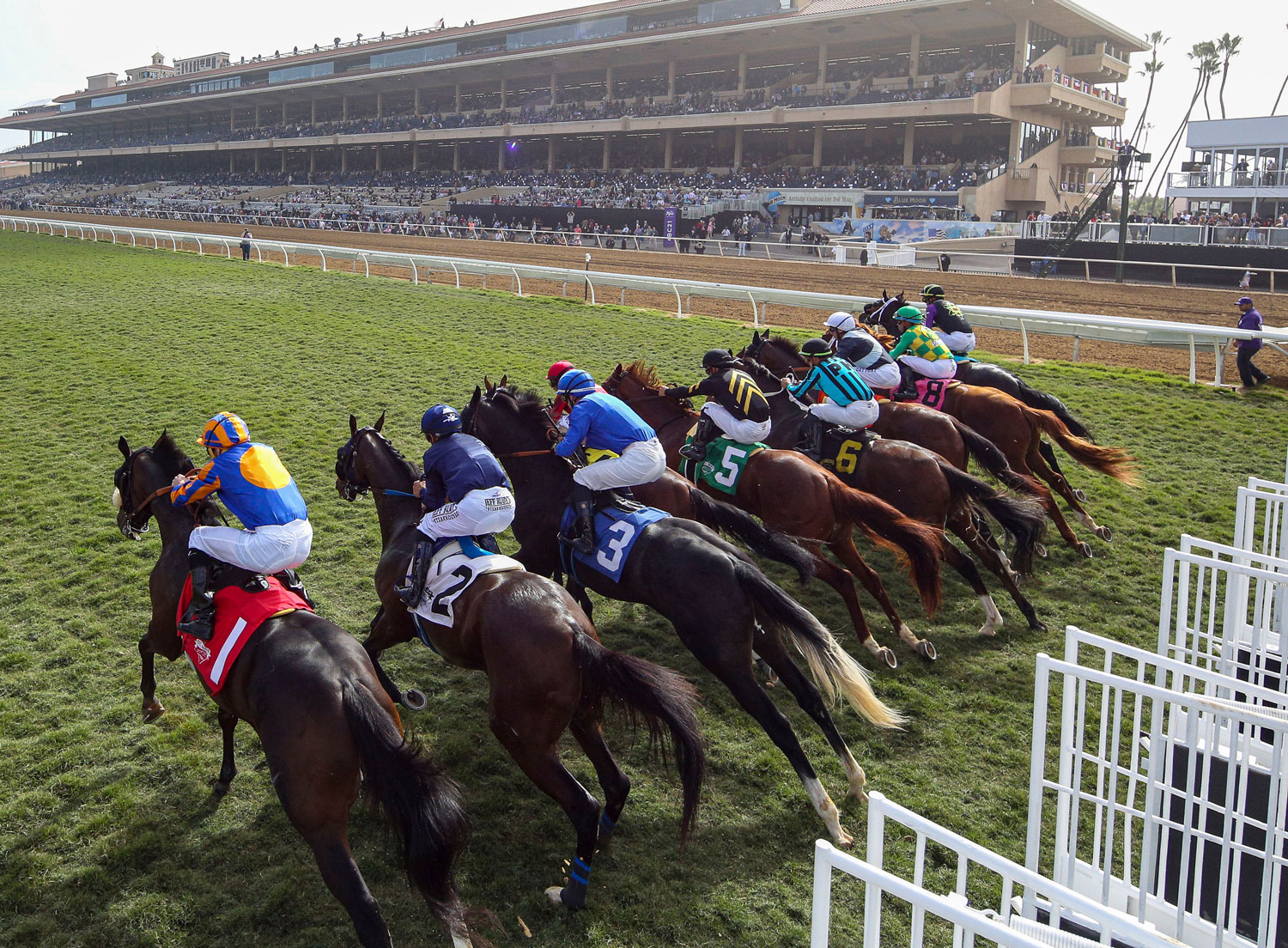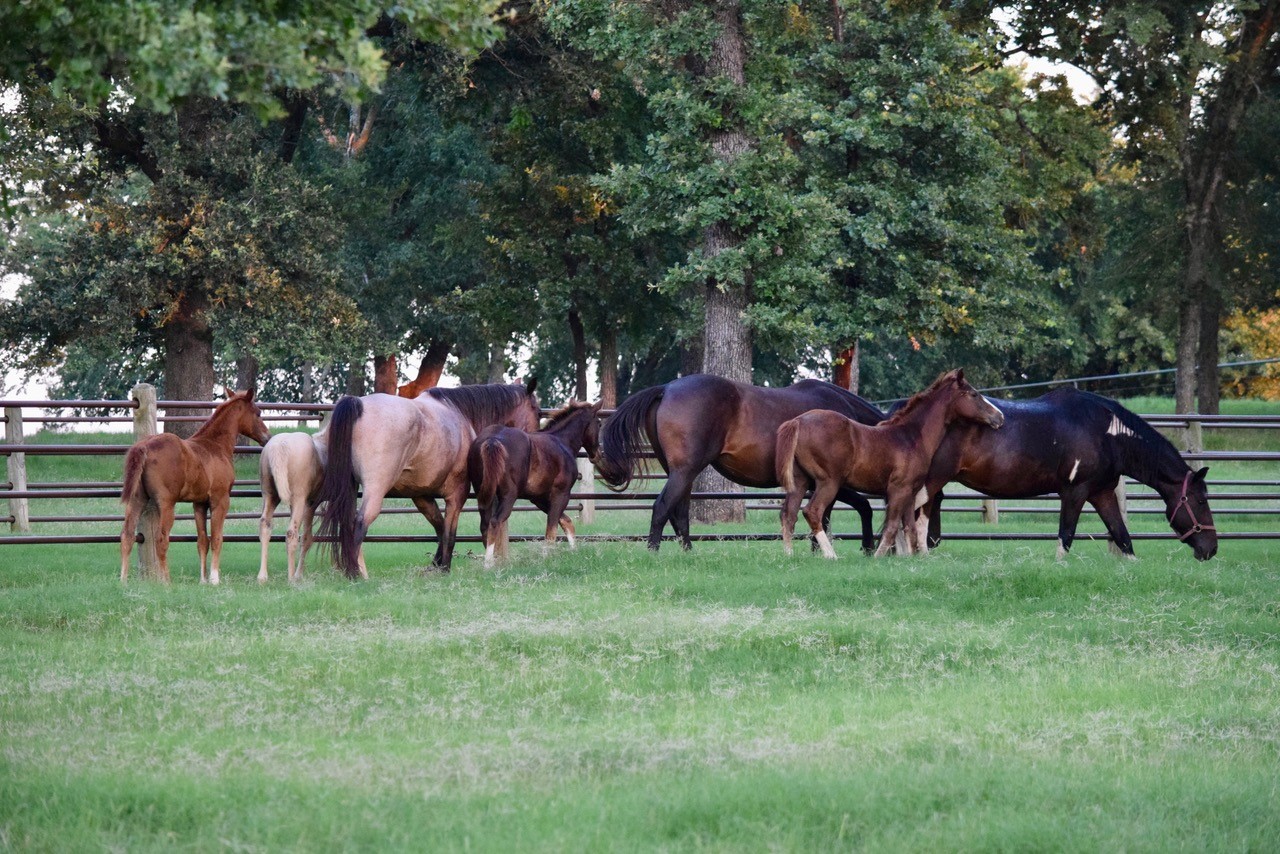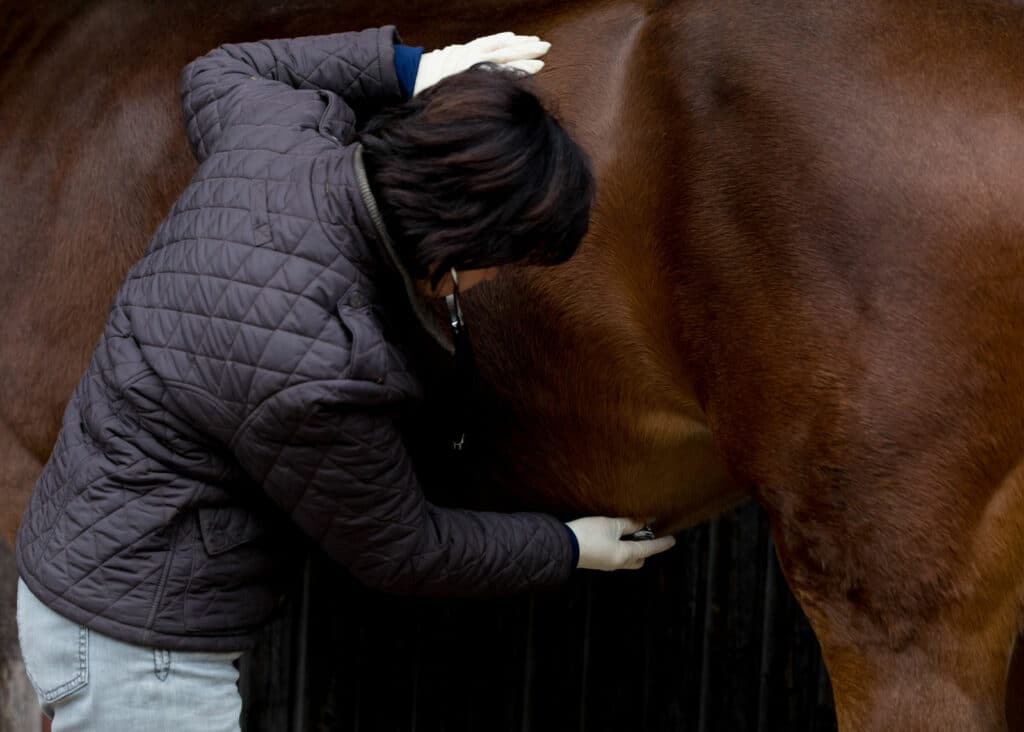We recently contacted The Horse magazine regarding the article “Recurrent Colilc Diagnosis” in their September 2010 issue. This began an exchange between our director of veterinary science, Frank Pellegrini, DVM, and AAEP President Nathaniel A. White, DVM. The original article identifies gastric ulcers as one of the many potential causes of recurrent colic, but fails to discuss the existence of colonic ulcers and their potential contribution to colic. Here is the exchange we’ve had with The Horse to-date, with the hopes that this very important discussion may continue.
Dr. Frank Pelligrini: Letter On Recurrent Colic Forum
Your recent article on colic diagnosis (“Recurrent Colic Diagnosis,” September 2010) overlooks what may be the most likely cause of all: colonic ulceration.
From the work we have done, we believe colic is predominantly brought about by intermittent feeding and diets of processed grain-based feeds that lead to colonic ulcers and, ultimately, to colic.
The equine digestive system supports a diet of slow-fed forage (a result of grazing), with a majority of nutrients obtained from bacterial fermentation of that forage in the colon and cecum to produce volatile fatty acids. The results of grain reaching the hindgut are well-documented: Simple carbohydrates are fermented by hindgut bacteria into lactic acid, creating “hindgut acidosis.” this is a likely precursor to colonic ulceration. Necropsies conducted among more than 1,500 horses, 2004 through 2008, showed colonic ulcer incidences between 63% and 80%.
Loss of blood as a result of colonic ulcers in turn results in blood vessel constriction, which may result in colic. A reduction of blood flow to the last few feet of the ileum will reduce peristalsis, likely leading to impaction. Also, necrotic tissue, often found in surgery, requires loss of blood flow. Finally, our necropsies showed that colons with low pH and ulceration are flaccid, thus we wonder if many cases of torsion colics may be traced to this.
Much colic is likely avoidable. It behooves every horse owner to appreciate the signals: girthiness, sensitivity along the flanks, tying-up, etc. Veterinarians should consider testing fecal pH and perhaps using a fecal occult blood test to help differentiate foregut and hindgut lesions.
We would be happy to share our studies with The Horse and with your readers.
Franklin L Pelligrini, DVM
Vice-President, Veterinary Medicine
Freedom Health LLC
Response by Dr. Nathaniel A. White II for The Horse
Note from 2010 AAEP President Nathaniel A. White II, DVM, MS, Dipl. ACVS:
Dr. Franklin Pellegrini’s letter correctly indicates the possibility that gastric and/or intestinal ulcers can be a cause of recurrent colic. However, based on the available clinical and research findings, the proposal that colonic ulcers are the most common cause of colic is misleading.
Gastric ulcers are known to be associated with colic and recurrence of colic, yet studies have shown that the majority of horses with gastric ulcers do not exhibit colic, and other digestive diseases that can cause colic are often present and may be the cause of gastric ulcers diagnosed during the colic episode. It is not yet clear if intestinal ulceration is a cause of intestinal disease or if intestinal or systemic problems cause the ulcers.
Epidemiologic studies indicate high-grain diets increase colic risk; however, studies of horses with recurrent or intermittent colic did not find a significant risk due to feeding grain. Though diets high in soluble carbohydrate can decrease the pH of ingest in the cecum and colon, the resulting acid environment is not in the range that causes mucosa irritation in normal intestine. More important than a change in pH is the possible shift in the type of microorganisms, which can occur with a decreased pH (increased acid). This change in bacteria is the more important factor causing damage to the intestinal lining rather than a lowered pH.
Dr. Pellegrini’s suggestion that ulcers can cause alteration in blood flow and necrosis in the equine intestine is not subsantiated by research. Furthermore, the signs of sensitivity in the flanks or “tying-up” have not been show to be a predictor of colic or related bowel disease or colon irritation. The current work indicating a high frequency of colonic ulcers needs to be carefully scrutinized and more research completed before concluding that most recurrent colic is due to colonic ulcers.
* Reprinted with permission from The Horse.
Dr. Frank Pellegrini Responds
Dr. Nathaniel White’s response to my letter (January 2011) raises some important points. I generally concur with many of Dr. White’s comments, while others require additional input. And, as my initial letter was limited for space, perhaps I need to provide additional detail. This letter seeks to redress the balance.
The results of my own research on the incidence of gastric and colonic ulcers were published in the March, 2005, issue of Journal of Equine Veterinary Science (1). The incidence of gastric ulceration in that study was 88%, while colonic ulceration was observed in 63% of cases. Overall, 97% of the cohort (N=180) were ulcerated.
An earlier study (N=365) examined all horses (thus, a mix of performance, leisure and work horses) passing through the abattoir. This and subsequent unpublished studies show the following:
| 2003 | 2007 | 2008 | 2009 | |
|---|---|---|---|---|
| N | 365 | 86 | 111 | 188 |
| Gastric | 55% | 60% | 43% | 48% |
| Colonic | 44% | 87% | 85% | 74% |
The one thing that was obvious from these studies is that colonic ulceration is usually seen in conjunction with gastric ulceration. As such, I concur with Dr. White’s statement that “gastric ulcers are known to be associated with colic”, and I too question causality. There are no studies to my knowledge that directly link gastric ulceration with colic.
As “colic” is defined medically as “abdominal pain”, this would technically include the discomfort from gastric ulceration. However, as practitioners, we know the problems we deal with under the umbrella of colic are essentially hindgut issues. Further, my own research and observations, along with the studies of others, lead to the following:
- Grain and concentrates are not a natural diet for horses. The greater the grain intake and the more intermittent the feeding pattern, the greater the likelihood of hindgut acidosis.
- Hindgut acidosis derives from simple carbohydrates being converted to lactic acid rather than forage producing normal VFAs, the principal source of energy for a horse.
- Lactic acid is then absorbed into the blood stream. While this was not specified in my initial letter, I suspect this is a contributor to “tying-up”, which is cramping, caused by excess lactic acid in the musculature.
- In this more acidic environment, bacteria that would ferment forage are killed off to be replaced by, primarily, pathogenic bacteria. During this exchange, the dead bacteria release endotoxins.
- Between 2002-2006, M. Oikawa et al (under the auspices of the Japan Racing Association) published their work of injecting these endotoxins into the anterior mesenteric artery of racehorses (2,3,4). They induced colic in all cases.
So, we have a situation where colonic ulceration has been observed across a wide array of horses, over an extended period, and where peer-reviewed studies have shown the direct correlation between endotoxins entering the blood stream and colic. It is logical to conclude that colonic ulceration may be a culprit, allowing these endotoxins to enter the blood stream with the attendant results. The references are shown below.
The external symptoms I referenced in my initial letter reflect the obvious sensitivities a horse will exhibit when the colon is not functioning correctly. These require further analysis in most cases, using techniques suggested. Unfortunately, we have all become so aware of gastric ulceration that these get overlooked and the obvious conclusions are therefore not made.
I concur totally with Dr. White that the shift in microorganisms is the likely factor leading to damage of the intestinal lining, and that this needs much greater attention. We would be delighted for others to carefully scrutinize our work and continue their own studies.
The purpose of my initial letter was to bring to the attention of practitioners and horse owners alike the important role of the hindgut and colonic ulceration in colic. I also wish to dispel the frequently repeated myth that gastric ulceration is a primary cause of colic. There are enough facts to support the hypotheses that the most likely single cause may be colonic ulceration and that both ulceration and colic are more than just diseased states, but are also induced conditions in most instances.
Yours truly,
Franklin L. Pellegrini, DVM
Vice President, Veterinary Medicine
Freedom Health, LLC
References
M. Oikawa, J. Shiga Equine Endotoxemia: Pathomorphological Aspects of Endotoxin-induced Damage in Equine Mesenteric Arteries, Journal of Veterinary Science, Vol 49, issue 4, May 2002
M. Oikawa, N. Masawa and H. Yoshikawa, Mesenteric Arterionecrosis in Natural and Experimental Equine Endotoxaemia, Journal of Comparative Pathology, Vol130, issue 1, Jan 2004
M. Oikawa, T. Ueno and H. Yoshikawa, Arterionecrosis of the Equine Mesentery in Naturally Occurring Endotoxaemia, Journal of Comparative Pathology, Vol134, issue 1, Jan 2006



